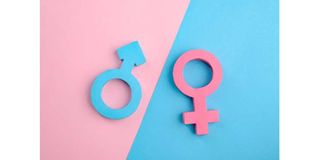More needs to be done to achieve gender parity

Gender equality symbol. Equality is a catalyst for achieving Sustainable Development Goals. Gender inequality manifests in several forms, ranging from biases in education to skewed representations in legislatures.
What you need to know:
- In education, for instance, schoolgirls are the most affected; they contend with high inequality levels to the extent that they feel it is normal to be pushed to the periphery.
- Attitudes and expectations about how girls should perform academically and behave in society push them towards certain pathways.
Gender inequality manifests in several forms, ranging from biases in education to skewed representations in Parliament.Other forms include the gender pay gap, poor access to health services, child marriages, and gender-based violence.
In education, for instance, girls are the most affected. Schoolgirls contend with high levels of inequality to the extent that they feel it is normal to be pushed to the periphery. There are attitudes and expectations in schools about how girls should perform academically and behave in society. Such situations push children towards certain pathways.
Biases
Due to gender-biased socialisation and depictions in schools and colleges, you may find that although girls sometimes perform better in mathematics and sciences than their male counterparts, they are less likely to choose careers involving sciences and engineering.
The term gender may be taken to mean a social and cultural contrast, which distinguishes the attributes of men and women or girls and boys. Accordingly, it refers to the roles and responsibilities of men and women. Gender-based roles and other attributes, therefore, change over time and vary based on cultural contexts.
The concept of gender includes the expectations held about the characteristics aptitudes and likely behaviours of both men and women – femininity and masculinity. Equality is when people of all genders have equal rights, responsibilities and opportunities.
Human rights
The concept that men and women, boys and girls have equal conditions, treatment and opportunities for realising their full potential, their human rights, and dignity. Also for contributing to, and benefiting from, economic, socio-cultural and political development.
Gender equality is, therefore, the equal valuing by society of the similarities and the differences of men and women, and the role they play. It is based on men and women being full partners in the home, community and society.
Equality does not mean that men and women will become the same, but that women’s and men’s rights, responsibilities and opportunities will not depend on whether they are born male or female.
Gender equality implies that the interests needs and priorities of both men and women, boys and girls are considered. It further recognises the diversity and that all human beings are free to develop their personal abilities and make choices without limitations due to sexist stereotypes and prejudices.
Sustainable development
Gender equality is a matter of human rights and is considered a precondition for, and an indicator of, people-centred sustainable development. Many people across the world seem ignorant of gender bias. Some people, including those facing such biases, seem not to realise it or are not bothered about it.
Borrowing from this year’s theme for International Women's Day, #EmbraceEquity, we need to embrace both equality and equity to realise gender parity. We embrace equity to forge harmony and unity, and to help drive success for all. Equality is based on the belief that all people should have the same opportunities for a happy life. Equality is the goal, and equity is the means to get there.
The writer is the principal of Mutamaiyu Secondary School, Nyandarua County; [email protected]





